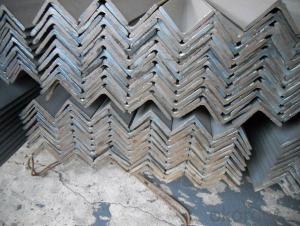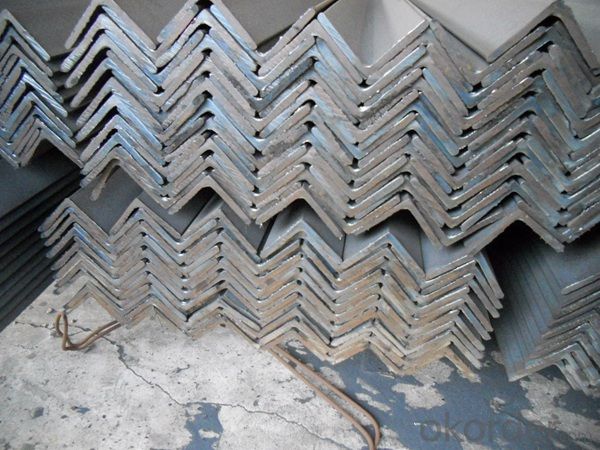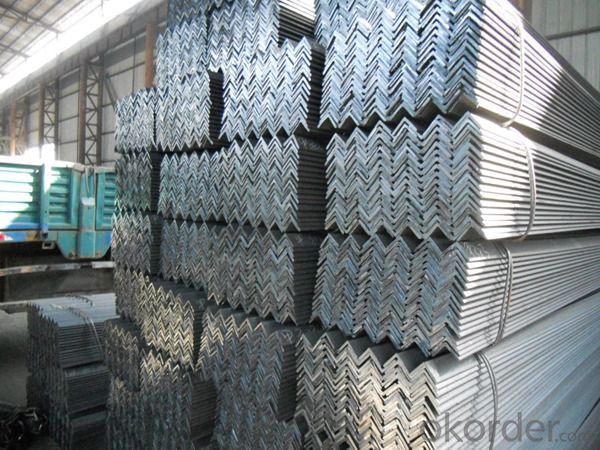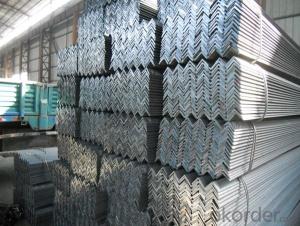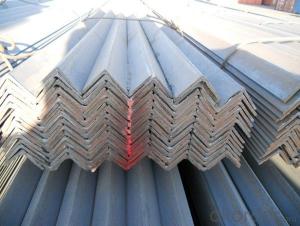Hot Rolled Mild Steel Angle Beams for Structures and for Buildings
- Loading Port:
- Guangzhou
- Payment Terms:
- TT OR LC
- Min Order Qty:
- 25 m.t.
- Supply Capability:
- 200000 m.t./month
OKorder Service Pledge
OKorder Financial Service
You Might Also Like
Product Description:
OKorder is offering Hot Rolled Mild Steel Angle Beams for Structures and for Buildings at great prices with worldwide shipping. Our supplier is a world-class manufacturer of steel, with our products utilized the world over. OKorder annually supplies products to European, North American and Asian markets. We provide quotations within 24 hours of receiving an inquiry and guarantee competitive prices.
Product Applications:
Hot Rolled Mild Steel Angle Beams for Structures and for Buildings are ideal for structural applications and are widely used in the construction of buildings and bridges, and the manufacturing, petrochemical, and transportation industries.
1. Supporting members, most commonly in the house raising industry to strengthen timber bears under houses. Transmission line towers, etc
2. Prefabricated structure
3. Medium scale bridges
4. It is widely used in various building structures and engineering structures such as roof beams, bridges, transmission towers, hoisting machinery and transport machinery, ships, industrial furnaces, reaction tower, container frame and warehouse etc.
Product Advantages:
Hot Rolled Mild Steel Angle Beams for Structures and for Buildings are durable, strong, and resist corrosion.
Main Product Features:
· Premium quality
· Prompt delivery & seaworthy packing (30 days after receiving deposit)
· Corrosion resistance
· Can be recycled and reused
· Mill test certification
· Professional Service
· Competitive pricing
Product Specifications:
.Standards:GB,ASTM,BS,AISI,DIN,JIS
2.Invoicing on theoretical weight or actual weight as customer request
3.Material: JIS G3192,SS400;SS540.
4.Sizes:
EQUAL ANGLES SIZES | |||
a(mm) | a1(mm) | thickness(mm) | length |
25 | 25 | 2.5---3.0 | 6M/12M |
30 | 30 | 2.5---4.0 | 6M/12M |
38 | 38 | 2.5 | 6M/12M |
38 | 38 | 3.0---5.0 | 6M/12M |
40 | 40 | 3.0---6.0 | 6M/12M |
50 | 50 | 3 | 6M/12M |
50 | 50 | 3.7---6.0 | 6M/9M/12M |
60 | 60 | 5.0---6.0 | 6M/9M/12M |
63 | 63 | 6.0---8.0 | 6M/9M/12M |
65 | 65 | 5.0---8.0 | 6M/9M/12M |
70 | 70 | 6.0---7.0 | 6M/9M/12M |
75 | 75 | 5.0---10.0 | 6M/9M/12M |
80 | 80 | 6.0---10.0 | 6M/9M/12M |
90 | 90 | 6.0---10.0 | 6M/9M/12M |
100 | 100 | 6.0---12.0 | 6M/9M/12M |
120 | 120 | 8.0-12.0 | 6M/9M/12M |
125 | 125 | 8.0---12.0 | 6M/9M/12M |
130 | 130 | 9.0-12.0 | 6M/9M/12M |
140 | 140 | 10.0-16.0 | 6M/9M/12M |
150 | 150 | 10---15 | 6M/9M/12M |
160 | 160 | 10---16 | 6M/9M/12M |
180 | 180 | 12---18 | 6M/9M/12M |
200 | 200 | 14---20 | 6M/9M/12M |
5. Material Specifications:
Grade | Yield Strength,N/mm² | Extension Strength N/mm² | |||
Thickness of Steel,mm | |||||
≦16 | >16-≦40 | >40-≦100 | >100 | ||
SS330 | ≧205 | ≧195 | ≧175 | ≧165 | 330-430 |
SS400 | ≧245 | ≧235 | ≧215 | ≧205 | 400-510 |
SS490 | ≧285 | ≧275 | ≧255 | ≧245 | 490-610 |
SS540 | ≧400 | ≧390 | - | - | ≧540 |
FAQ:
Q1: Why buy Hot Rolled Mild Steel Angle Beams for Structures and for Buildings from OKorder.com?
A1: All Hot Rolled Mild Steel Angle Beams for Structures and for Buildings offered byOKorder.com are carefully selected from China's most reliable manufacturing enterprises. Through its ISO certifications, OKorder.com adheres to the highest standards and a commitment to supply chain safety and customer satisfaction.
Q2: How do we guarantee the quality of our products?
A2: We have established an advanced quality management system which conducts strict quality tests at every step, from raw materials to the final product. At the same time, we provide extensive follow-up service assurances as required.
Q3: What is the normal tolerance of Hot Rolled Mild Steel Angle Beams for Structures and for Buildings?
A3: Normally 3%-5%, but we can also produce the goods according to the customers' requests.
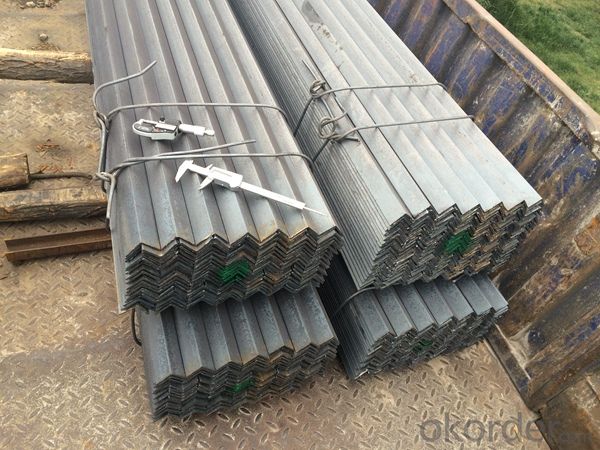
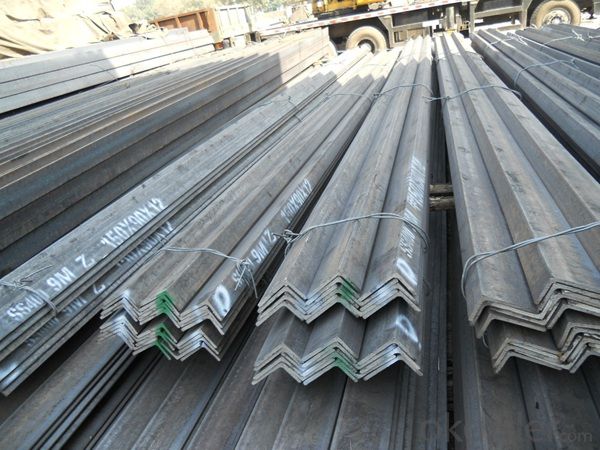
- Q: How do you calculate the strength of a steel angle?
- Calculating the strength of a steel angle requires consideration of several factors. Important parameters to take into account include the angle's dimensions, the steel's material properties, and the applied load or force. Firstly, determining the dimensions of the angle is necessary. This entails measuring the lengths of both legs and the angle's thickness. These measurements are crucial for calculating the area moment of inertia, which plays a vital role in determining the angle's strength. Next, knowledge of the steel angle's material properties is essential. This includes information on the yield strength, ultimate tensile strength, and modulus of elasticity. Material specifications or testing can be used to obtain these properties. Once the dimensions and material properties are known, the strength of the steel angle can be calculated using various formulas and equations. One commonly used approach involves calculating the section modulus, which measures the angle's resistance to bending. The section modulus can be determined using the formula Z = (b × h^2)/6, where b represents the angle's thickness and h corresponds to the distance between the centroid of the angle and the outer edge. To determine the strength of the angle, it is necessary to compare the applied load or force with the calculated section modulus. If the applied load falls within the limits of the section modulus, the angle is considered structurally sound. However, if the applied load exceeds the section modulus, there is a risk of failure. It's important to note that the strength calculations for a steel angle are based on assumptions and ideal conditions. Real-world factors such as material imperfections, fabrication processes, and load distribution can affect the actual strength of the angle. Therefore, it is advisable to consult structural engineers or reference design codes to ensure accurate calculations and safe design.
- Q: How does the price of steel angles vary based on size and grade?
- The price of steel angles can vary based on both the size and grade of the steel. Firstly, the size of the steel angle plays a significant role in determining its price. Generally, larger steel angles tend to be more expensive than smaller ones. This is due to the fact that larger angles require more raw material and involve more manufacturing processes, resulting in higher production costs. As a result, the price of steel angles tends to increase as the size or length of the angle increases. Secondly, the grade of the steel also influences its price. Steel angles are produced in various grades, each offering distinct characteristics and properties. Higher-grade steel angles, such as stainless steel or structural steel, are generally more expensive compared to lower-grade options like mild steel. This is because higher-grade steels often require more advanced manufacturing techniques and superior quality raw materials, which contribute to the higher production costs and subsequently drive up the price. Additionally, factors such as market demand, availability of raw materials, and manufacturing efficiency can also impact the price of steel angles. Fluctuations in demand and supply can lead to price variations, with higher demand often resulting in higher prices. Moreover, the availability and cost of raw materials used to produce steel angles, such as iron ore and scrap metal, can affect the overall price. Lastly, improvements in manufacturing processes and technology can lead to increased efficiency, potentially lowering production costs and influencing the final price of steel angles. In summary, the price of steel angles is influenced by both their size and grade. Larger angles and higher-grade steels tend to be more expensive due to increased production costs. Additionally, market demand, raw material availability, and manufacturing efficiency can also impact the price of steel angles.
- Q: What are the different design considerations for steel angles in architectural applications?
- Some of the different design considerations for steel angles in architectural applications include the load-bearing capacity, structural stability, aesthetic appeal, corrosion resistance, and ease of installation. Additionally, factors like the size and shape of the angles, the type of steel used, and the specific architectural requirements also play a role in the design process.
- Q: What are the different types of steel angles used in staircases?
- There are several different types of steel angles that are commonly used in staircases. These angles serve different purposes and are chosen based on the specific requirements of the staircase design. 1. Equal Leg Angle: This is the most common type of steel angle used in staircases. It has equal length legs that form a 90-degree angle. These angles are typically used for structural support and are often found in the framework of the staircase. 2. Unequal Leg Angle: As the name suggests, unequal leg angles have legs of different lengths. These angles are used when one side of the staircase needs more support or when a certain aesthetic look is desired. They are commonly used in stair treads, risers, and stringers to provide stability and strength. 3. L-Shaped Angle: L-shaped angles are used for corner connections in staircases. They have one leg that extends straight and another that is perpendicular to it, forming an L shape. These angles are commonly used in stair handrails, balusters, and brackets to provide support and reinforcement at junctions. 4. Slotted Angle: Slotted angles are specially designed with slots along the length of the angle. These slots allow for easy adjustment and flexibility in the positioning of components in a staircase. They are often used for adjustable stair brackets, tread supports, and other elements that may require fine-tuning during installation. 5. Flat Bar Angle: Flat bar angles, also known as flat stock angles, are made from flat steel bars bent to form a right angle. These angles are used to provide additional support and reinforcement in staircases where extra strength is required. They are commonly used in heavy-duty stair applications or where there is a need for added load-bearing capacity. Overall, the choice of steel angle used in a staircase depends on factors such as load capacity, structural requirements, aesthetic considerations, and the specific design of the staircase. Consulting with a structural engineer or staircase designer can help determine the most suitable type of steel angle for a particular staircase project.
- Q: How do steel angles perform in terms of fire resistance?
- Steel angles have good fire resistance properties due to their high melting point and low thermal conductivity. They can withstand high temperatures for a longer time compared to other materials, such as wood or aluminum. However, it is important to note that the fire resistance of steel angles can be affected by factors such as the thickness of the steel, fire protection measures, and the duration of exposure to fire.
- Q: What is the process of hot rolling steel angles?
- The process of hot rolling steel angles involves heating a billet of steel to extremely high temperatures and then passing it through a series of rotating rollers. These rollers apply pressure to the billet, shaping it into the desired angle profile. The hot rolling process helps to improve the structural integrity and overall strength of the steel angles. After hot rolling, the angles are cooled and then cut to the desired length.
- Q: Can steel angles be used in marine or underwater applications?
- Indeed, one can utilize steel angles in marine or underwater settings. Frequently, steel angles find application in the fabrication of diverse marine infrastructures, including vessels, offshore platforms, and subaqueous pipelines. The superior strength and corrosion resistance possessed by steel render it apt for enduring the challenging circumstances of the marine milieu, encompassing contact with saltwater and extreme temperatures. Moreover, the ease with which steel angles can be welded or bolted together to construct a robust and long-lasting framework makes them an optimal selection for marine and underwater purposes.
- Q: What is the maximum thickness of a steel angle?
- The maximum thickness of a steel angle is typically determined by the manufacturing process and the specific requirements of the application. Generally, steel angles can range in thickness from 1/8 inch to several inches. However, it is important to note that the availability of thicker steel angles may vary depending on the supplier and the specific grade of steel being used. In order to determine the maximum thickness of a steel angle for a particular project, it is recommended to consult with a structural engineer or a steel supplier who can provide guidance based on the specific requirements and load-bearing capacities needed.
- Q: How do you calculate the shear strength of a steel angle?
- To calculate the shear strength of a steel angle, you need to consider the properties of the material and the geometry of the angle. The shear strength is a measure of the maximum load that the angle can withstand before it fails under shear stress. First, you need to determine the cross-sectional area of the steel angle. This can be calculated by multiplying the thickness of the angle by the length of one side. For example, if the angle has a thickness of 0.25 inches and a length of 4 inches, the cross-sectional area would be 1 square inch (0.25 inches x 4 inches). Next, you need to determine the shear stress that the angle can withstand. This is typically provided by the manufacturer and is given as a maximum value in pounds per square inch (psi) or megapascals (MPa). For example, let's say the shear stress is given as 30,000 psi. To calculate the shear strength, you simply multiply the cross-sectional area by the shear stress. Using the example values, the shear strength would be 1 square inch x 30,000 psi = 30,000 pounds. It is important to note that this calculation assumes the angle is loaded in a single shear plane and that the material is homogenous and isotropic. In real-world applications, there may be additional factors to consider, such as the presence of holes, welds, or other stress concentrations. In these cases, more complex calculations or testing may be required to determine the shear strength accurately.
- Q: Can steel angles be used for manufacturing window frames?
- Yes, steel angles can be used for manufacturing window frames. Steel angles are commonly used in construction and fabrication due to their strength and durability. They provide structural support and can be easily welded or bolted together to create window frames that are sturdy and long-lasting.
Send your message to us
Hot Rolled Mild Steel Angle Beams for Structures and for Buildings
- Loading Port:
- Guangzhou
- Payment Terms:
- TT OR LC
- Min Order Qty:
- 25 m.t.
- Supply Capability:
- 200000 m.t./month
OKorder Service Pledge
OKorder Financial Service
Similar products
Hot products
Hot Searches
Related keywords
